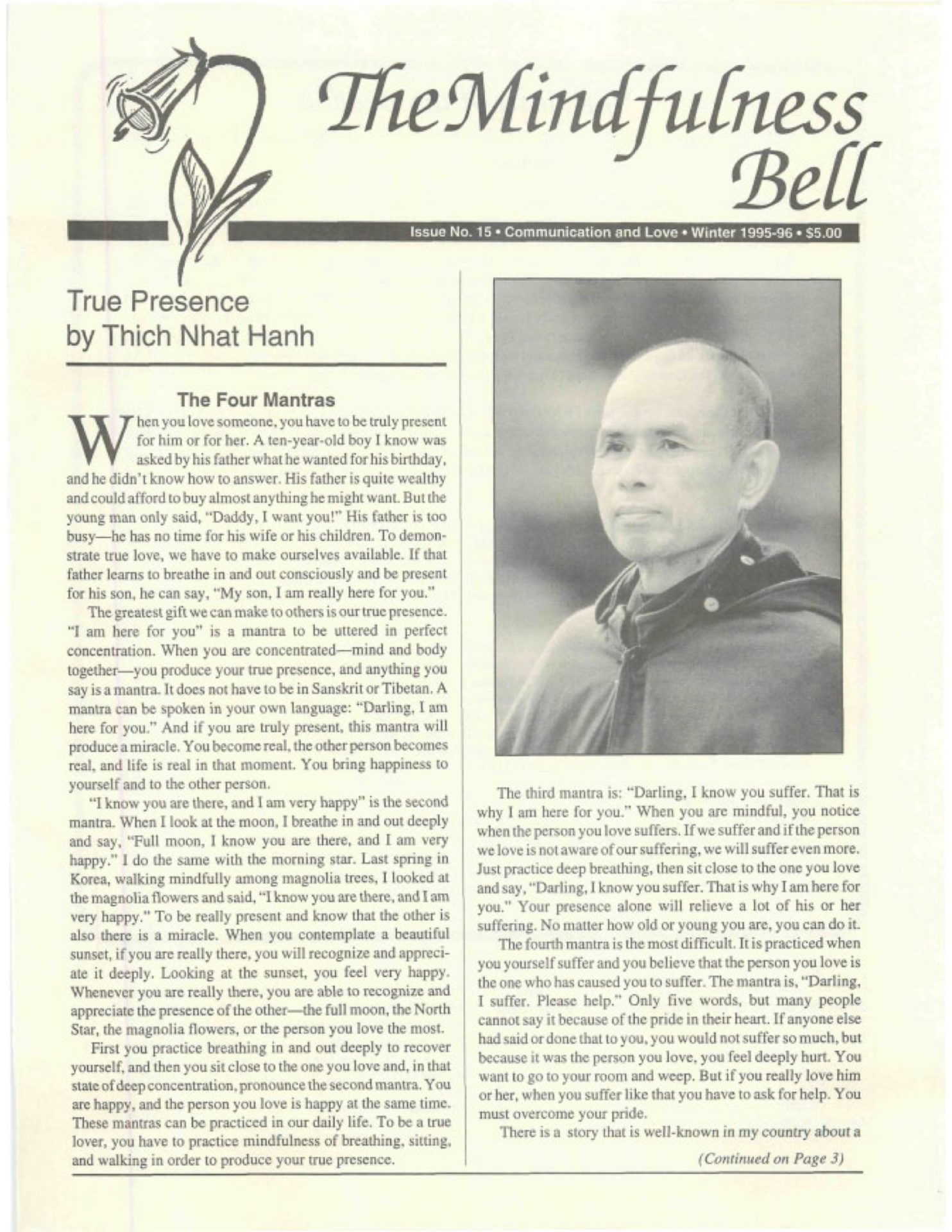By Alberto Annicchiarico
Last summer, Thich Nhat Hanh reminded us that the practice is wherever we are. “Practicing is always possible,” he explained, “but one of the most important steps is to get in touch with an existing Sangha or build a small one around us. The teacher is a treasure, but without a Sangha the practice can become very difficult.” In Milan, we have experienced how Sangha building can be both essential and exacting at the same time.
By Alberto Annicchiarico
Last summer, Thich Nhat Hanh reminded us that the practice is wherever we are. "Practicing is always possible," he explained, "but one of the most important steps is to get in touch with an existing Sangha or build a small one around us. The teacher is a treasure, but without a Sangha the practice can become very difficult." In Milan, we have experienced how Sangha building can be both essential and exacting at the same time. Our group was born in September 1993 and has gone through positive times as well as negative ones. Since then new people have joined us, while others have decided to leave because they did not feel at ease. What is the secret to succeed? Relying on the practice. In his book For A Future To Be Possible, Thay writes, "If you feel unhappy in a Sangha, it is better for you to make an effort and continue. We do not need a perfect Sangha. An imperfect one is already enough. We can try our best to become the positive elements in the Sangha ourselves and encourage the rest of the group to support our efforts."
Sometimes we feel frustrated that not even the Sangha is the ideal refuge from the feverish and aggressive reality. We realize that a place of kindness, perfection, or bliss does not exist. Meditation does not make us fly or make miracles. It simply shows what is there. When we become aware that the same things happen inside and outside the Sangha, we can see that the problem depends on us, no one else. Maybe we catch ourselves judging others or pretending to be what we are not. Suddenly our companions along the path become mirrors of what we think and do. We have a chance to learn and listen more deeply. Hidden aspects of our character reveal themselves. Therefore, it is only from relying on the practice, our one and only teacher, that we can learn how to experience the Sangha in its true dimension—a matchless arena where it is possible to understand ourselves and others, to make positive changes in our lives— in our family, at work, and in our society.
In the Milan Sangha, we have really touched what is the meaning of accepting the differences—in ideas, characters, aspirations. That is the reason why we continue trying hard to understand not only with our brain, but with all our heart. Thanks to the practice, during our weekly meetings, our Days of Mindfulness, and retreats, we have experienced a fruitful phase of common growth. Some of those who had left "to think it over" have come back and shared their happiness to have felt that the Sangha was always there, available and ready to welcome them. In Plum Village, Dharma teachers suggest that we feel the Sangha as a family full of love and understanding, a community rooted in its traditions and original culture, where we can live guided by the Five Wonderful Precepts. This is what we try and put into practice in our Sangha. Having taken refuge in the Sangha has transformed our lives.
Alberto Annicchiarico is a member of the Milan Sangha.

